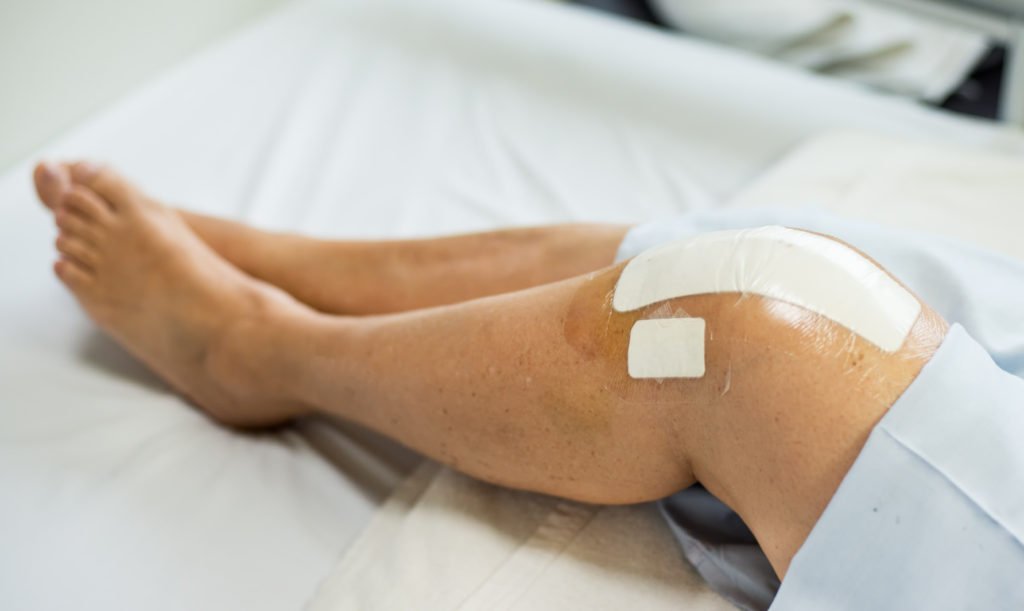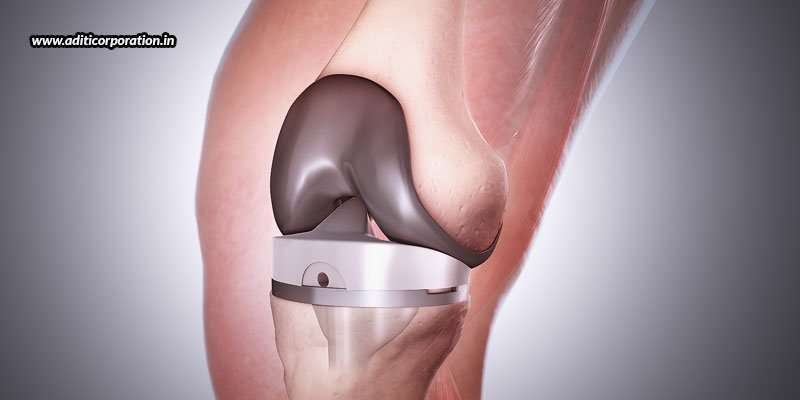Driving After A Knee Replacement
You should be able to start driving again after about 68 weeks, as long as you can operate the pedals and control your car in all situations. Any earlier than this and your reaction times may be too slow, particularly for emergency stops. Always check with your insurance company and your doctor first.
Is It The Right Time For A Knee Replacement
Age alone is no bar to surgery. Older and younger people benefit equally, as long as they are generally healthy to start. However, people under 60 are encouraged to delay total knee replacement if they can.
The reason? Artificial joints have a limited life span. Assuming an average level of physical activity, you can expect today’s joint implants to last 15 to 20 yearssometimes longer. However, if you are overweight or more physically active than average, your new joint will face additional stress and may wear out faster.
Ideally, you want your first knee replacement to be your last. Given the average life span for Americans, most older adults who get a new knee will not need to have it replaced.
The situation is more complicated if you are in your 40s or 50s. In this case, the new knee is more likely to wear out during your lifetime. Then you’ll need to have a revision surgery to take out the old one and replace it. The number of people under age 55 having knee replacements is growing rapidly.
But it’s also possible to wait a bit too long. If the joint becomes crooked because of breakdown of cartilage and bone, it can make the surgery more complicated. Some research also suggests that it may provide less benefit in the long term for people who wait until they have significant disability to get surgery. But other research finds no difference in results for people who wait longer.
An Artificial Meniscus May Soon Be Available
If you are suffering from knee pain following meniscus surgery or are without viable treatment options, the NUsurface®Meniscus Implant may provide an alternative option, once it has approval from the U.S. Food and Drug Administration. NUsurfaces design mimics the function of the natural meniscus and redistributes weight across the knee joint. The implant is made from medical grade plastic and, as a result of its unique materials, composite structure, and design, does not require fixation to bone or soft tissues.
NUsurface can potentially address the treatment gap of those who are too old for meniscus repair and too young for total knee arthroplasty. U.S. clinical trials completed enrollment in June 2018, and the company expects to file for U.S. Food and Drug Administration approval soon.
You May Like: Regrow Cartilage Naturally
Surgical Treatment Of Knee Pain
Partial knee replacement: The surgeon replaces the damaged portions of the knee with plastic and metal parts.
Total knee replacement: In this procedure, the knee is replaced with an artificial joint. It requires a major surgery and hospitalization.
Risks Of Knee Replacement Surgery

Knee replacement surgery is a common operation and most people do not have complications. However, as with any operation, there are risks as well as benefits.
Complications are rare but can include:
- stiffness of the knee
- infection of the joint replacement, needing further surgery
- unexpected bleeding into the knee joint
- ligament, artery or nerve damage in the area around the knee joint
- persistent pain in the knee
- a break in the bone around the knee replacement during or after the operation
In some cases, the new knee joint may not be completely stable and further surgery may be needed to correct it.
Also Check: How To Whiten Knees Fast
Types Of Knee Replacement Procedures
The knee replacement surgeries aim to restore the smooth knee motions by replacing the knee joint with an artificial component. The surgery is also known as arthroplasty. With the help of the latest technology, the surgery can be performed in a minimally invasive manner. Here are a few types of knee replacement surgeries:
The doctor might opt for one of these procedures depending upon the extent of damage in your knee joint. But, again, the recovery time would depend upon the type of surgical procedure.
How To Prepare For Knee Replacement
There are certain steps that can improve your recovery time and results. It is important to follow your knee replacement surgeonâs instructions both before and after surgery, as well as that of your rehabilitation therapistâs recommendations. Learn more about reparing for knee replacement by reading .
Also Check: Can You Rebuild Cartilage In Your Knee
Total Knee Replacement Facts
- Patients with severe destruction of the knee joint associated with progressive pain and impaired function may be candidates for total knee replacement.
- Osteoarthritis is the most common reason for knee replacement operation in the U.S.
- Risks of total knee replacement surgery have been identified.
- Physical therapy is an essential part of rehabilitation after total knee replacement.
- Patients with artificial joints are recommended to take antibiotics before, during, and after any elective invasive procedures .
How Long Does It Take To Walk After A Knee Replacement
Most patients progress to a straight cane, walker or crutches within two or three days after surgery. As the days progress, the distance and frequency of walking will increase.
Patients are usually able to drive a car within three to six weeks after surgery and resume all other normal activities by or before six weeks. Complete recuperation and return to full strength and mobility may take up to four months. However, in many cases, patients are significantly more mobile one month after surgery than they were before they had their knee replacement
Don’t Miss: Regrow Knee Cartilage Naturally
Try These Treatments To Relieve Knee Pain
Many patients find that using noninvasive treatments and modifying their activities provide enough relief to keep them moving. While these options don’t treat the cause of arthritis-related knee pain, they can help keep it at bay and potentially delay or avoid knee replacement.
Before recommending surgery, your doctor will likely recommend trying one or all of these nonsurgical treatment options first:
- Oral medications: Non-steroidal anti-inflammatory drugs sold over the counter as Advil, Motrin, and generics can effectively control mild to moderate osteoarthritis pain. However, NSAIDs may not be safe for patients who take blood thinners or have kidney disease, and they can increase the risk of heart attack, heart failure or stroke.
- Physical therapy: Participating in physical therapy can help strengthen the muscles around the knee. This helps provide better support to the arthritic joint, which can help reduce pain.
- Knee bracing: A knee brace can support and help stabilize the knee.
- Injections: Injections can be used every few months to help relieve pain from arthritis. Common types of injections include steroid injections, which reduce inflammation in the knee, and gel injections, which help lubricate the joint.
If you have tried everything and knee pain still interferes with your quality of life, it might be time to discuss knee replacement.
Why You Might Say Not Yet
Here are a five reasons knee replacement might not be right for youat least for now:
Don’t Miss: Is Nano Knee Covered By Medicare
Are There Any Risks Involved In Partial Knee Replacement Surgery Both During The Procedure And Afterwards
The risks involved in a partial knee replacement are the same as any other surgical procedure of the knee. There are general risks such as infection, bleeding, nerve or blood vessel damage, pain, loosening of prothesis and pain, all of which can lead to further surgery. However, the chances of such occurrences are much lower in a partial knee replacement as it is a smaller operation.
The main risk specifically associated with a partial knee replacement isloosening of the prothesis which can make it necessary to perform a revision or a full knee replacement. While this can be unpredictable, we aim for a good result lasting at least 10 years.
The Importance Of Post

What I emphasize to people is that the operation to replace the knee is just the first step in recovery. Postoperative rehabilitation is just as critical as the surgical procedure.
People often think that once they are done with four to six weeks of physical therapy that they will be great and get back to participating in activities they love. I make it clear to my patients that is not the case. It can take up to a year of diligent work to rebuild muscle mass, get stamina back, and improve coordination and balance.
I tell people that even if they have never been a gym rat, they should consider joining a gym for at least six months after finishing formal physical therapy. During this time a patient should continue a workout program to maximize the potential of reaching that point where he or she can say, My knee now allows me to do all the things that I couldnt do before.
You May Like: Can I Regrow Cartilage In My Knee
Knee Replacement Recovery Exercises
Initially, as you increase your activity the knee can be sore, but with appropriate medication and gentle exercise, your recovery should proceed smoothly.
Well prescribe a set of exercises for you to do at home. Every programme is different, but here are a few exercises we regularly ask patients to do. You should aim for 3 sets of 10 reps per exercise every day:
- Stair lunges: Stand at the base of the stairs and place your operated foot on the first stair. Lunge forward slowly bending at the knee only as far as is comfortable
- Bed exercise: Push the knee flat into the bed to fully straighten the leg
- Mini-squats: Stabilise yourself by holding on to a kitchen bench, door frame or heavy table. Keeping your back straight, lower you buttocks bending, at the knees. Only go as far as is comfortable.
Knee Replacement Recovery Time And Recuperation
Total knee replacement surgery generally takes about 60 to 90 minutes, but you should expect to be in the operating room for over two hours. Rehabilitation will begin within 24 hours of surgery.
After your surgery, the nursing staff will position you in bed and help you turn until you are able to move on your own. You may have a pillow between your legs if ordered by your surgeon.
Very soon after surgery, a physical therapist will come to your room to teach you appropriate exercises and review your progress. Gentle exercises to improve your range of motion can help prevent circulation problems as well as strengthen your muscles.
Your rehabilitation program will begin as soon as you are medically stable and there are orders from your doctor to begin postoperative mobility. All patients begin rehabilitation within 24 hours of their surgery. Your motivation and participation in your physical therapy program is key to the success of your surgery and recovery. The physical therapist will assist you in the following activities:
- sitting at bedside with your feet on the floor
- transferring in and out of bed safely
- walking with the aid of a device
- climbing stairs with aid of a device
You May Like: Do Compression Sleeves Help With Knee Pain
Is It Time For A Total Knee Replacement
Climbing stairs has become an ordeal. Taking the dog for a long walk is out of the question. Squatting to pick up a grandchild just doesn’t happen anymore. When you’re not able to do the things you want and love to do, your body may be telling you it’s time for a total knee replacement.
A total knee replacement is a major surgery that requires a big commitment on your end to recover from it. For the first three months after surgery, you’ll be healing and doing exercises to build strength and improve your range of motion. Full recovery from a total knee replacement takes a up to a year.
Before you and your orthopedic specialist decide it’s time, you’ll want to give noninvasive therapies a chance, including:
- Modifying your activities.
- Using a cane or walker.
- Working with a physical therapist.
There’s no age range for having a total knee replacement. It’s a matter of decreasing function and increasing pain that matches up with what X-rays of your knee are showing. For instance, if you’re 50, have bad arthritis and are unhappy with your quality of life, then it’s reasonable to undergo a total knee replacement to regain function and mobility at a younger age.
You’ll also consult with an orthopedic surgeon and begin preparing for surgery by:
Depending on a number of factors, you may be a good candidate for same-day surgery. Be sure to discuss this option with your surgeon. Otherwise, expect to spend one or more nights in the hospital.
Topics in this Post
How Implants Wear Out
Most knee replacements are made with metal caps that cover the end of the thigh bone and the top of the shin bone. Between these metal caps is a piece of plastic that provides a smooth surface for bending of the implant. The plastic can wear out over time, either as a slow, gradual wearing away, or a sudden catastrophic failure.
There are some situations where the wearing out can be accelerated. These situations include when the alignment of the implants was not ideal, when the knee is unstable , or if the patient performs activities that put too much stress on the implant. Knowing which activities can cause damage to knee replacement implants can help ensure the parts last as long as possible.
Recommended Reading: Cellulite Above Knees
Knee Replacement Recovery Time: First 3 Months
For 6-8 weeks after knee replacement surgery you should avoid:
- Any pivoting on your knee
- Kneeling
- Squatting
You will need to continue with your knee replacement rehab programme for at least 3 months after knee replacement surgery, probably six months to get the best result from your operation.
You will be able to progress your exercises as your knee gets stronger and more flexible. Visit the rehab section to find out more. The more you stick to your exercise programme, the quicker your knee replacement recovery is likely be.
Is A Knee Replacement Right For Me
Your consultant may recommend a knee replacement if:
- your knee pain is so severe that you cant sleep at night
- youre having trouble walking
- youve tried alternative treatments and they havent helped
While most people who have a knee replacement are between 60 and 80 with the average age at 69 years many younger patients also benefit from surgery.
The decision to carry out a knee replacement is made jointly between you, your GP and your surgeon. There’s almost never an absolute indication for knee replacement surgery, but ultimately the decision is yours.
Also Check: Rollator Knee Scooter
Knee Replacement Surgery Shouldnt Be Your First Line Of Treatment
Even if your knee pain is significant, most doctors will recommend non-operative treatment options before recommending knee replacement surgery. This might include weight loss, an exercise regimen, medications, cortisone or other injection therapies, a minimally invasive surgical procedure, such as a meniscectomy, or bracing.
Why You Might Say Nows The Time

Here are seven signs that the time might be right for a knee replacement:
Read Also: Nano Knee Surgery Cost
Are There Nonsurgical Treatment Options
Before discussing knee replacement, your doctor may prescribe an anti-inflammatory over-the-counter pain medication such as ibuprofen or naproxen to help with pain and reduce swelling. Cortisone, a steroid hormone, may also be injected into the knee to relieve pain. You might also want to try glucosamine or chondroitin sulfate, common supplements containing material found in the joints, which help with regeneration.Losing weight, thanks to changing your diet and exercising more, also have a positive effect on the joints. Our knees receive four pounds of pressure for each pound of body weight, giving even a slight reduction considerable impact. Beyond that, the increased strength and mobility from exercise can reduce pressure.
What Are The Main Benefits Of Undergoing A Partial Knee Replacement
There are many benefits to having a partial knee replacement. The main positives include the following:
- it is less invasive than a total knee replacement
- the majority of the patients knee is preserved, including all of the ligaments
- the patient remains eligible to have a full knee replacement should they require it in the future
Recommended Reading: Inversion Table After Hip Replacement